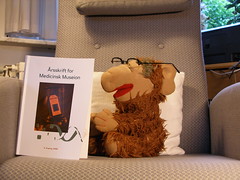If you want a nice pet for your kids, why go to a home for abandoned cats (it only makes you feel bad because you can’t buy them all) or get in trouble with your neighbor who sold you the most wonderful kitten (it just happened to grew into a psychotic monster)? Get a fresh copy of your cosy, reliable pet instead. Buy a clone. Genetic Savings & Clone
will help you make an exact (genetic) copy of your old favorite and give its (genetic) features eternal life. The company “began delivering clones to clients before the end of 2004, and are continuing to produce and deliver clones for clients, now at a new price of $32,000” (see more here). The price is approx. the same as a new Toyota.

They are now trying to develop the technology for cloning dogs. And who knows, the second next step in Genetic Savings & Clone’s corporate strategy may be a “clone-your-favorite child” program?
(learned about the company from Technology Review, MIT, 28 Dec.)

